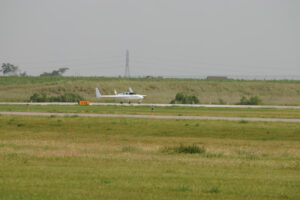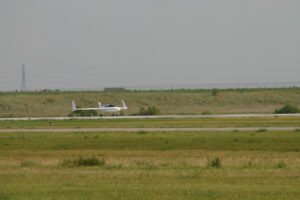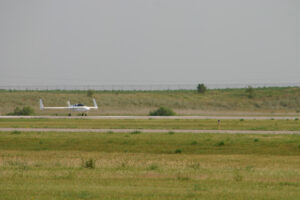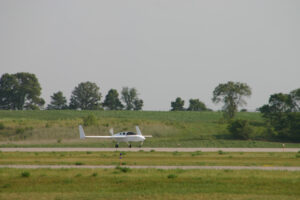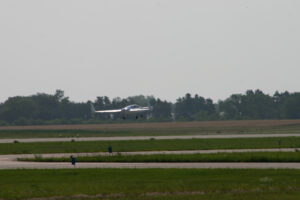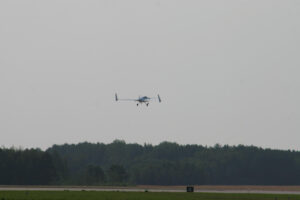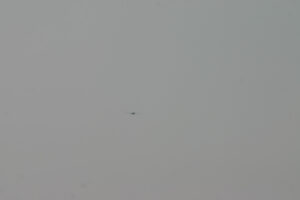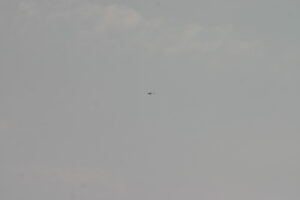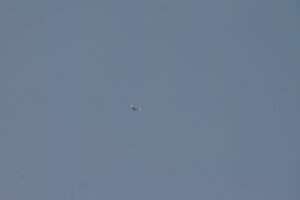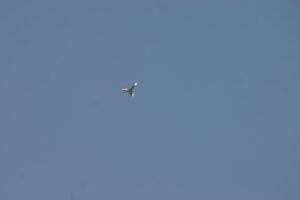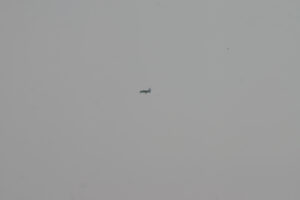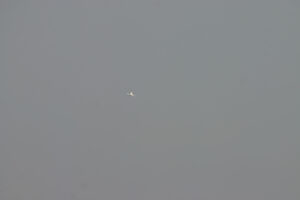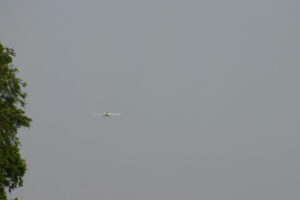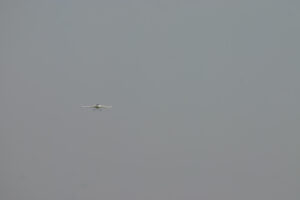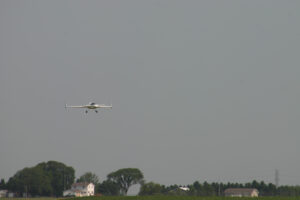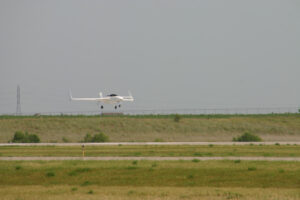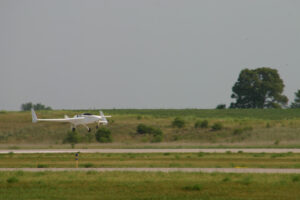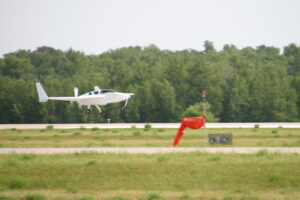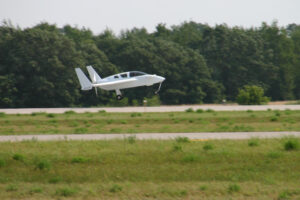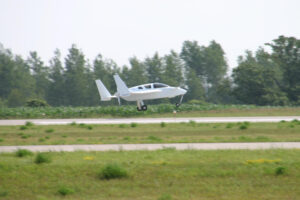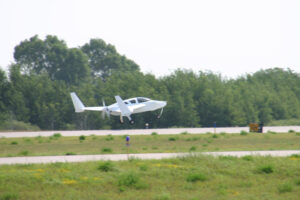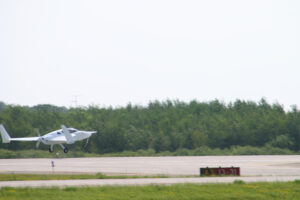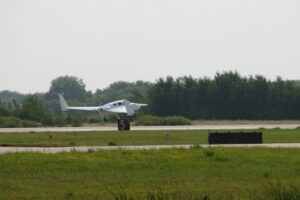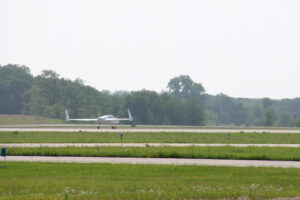Conducted 07/04/2012 –
In our quest to lower the oil temps, we discovered that the deflector installed just forward of the oil cooler exit was not built correctly. The only depiction we had for his deflector showed it only from the side, and thus did not indicate that the deflector needed sides itself. We built a new deflector (with sides this time) and stuck it on over the top of the existing one with RTV. We also rigged up the next pressure test by installing pitot lines on both the top and bottom of the oil cooler, and installing yet another set of valves and tees in order to check the pressure drop across the oil cooler.
The temps in MN had been much like the rest of the country, Hot. While it does make for a good environment to test oil cooling, it’s miserable for working on the plane or even flying. We decided we would make the next test flight early in the morning to at least make it tolerable to fly. So at the not so early morning hour of 8am we arrived at the airport to conduct flight 5. John’s flight report is below:
I set up everything in advance. The laptop, camcorder, radios, pitot valves, all ready to go before I even climbed in. The engine again fired up and idled nicely, and I quickly made my way for runway 13, contacting STC ground on the roll through the ramp area. I got to the runup area and wasted no time performing my runup. I took the runway with the oil temp at 147F, and quickly put 4TF back in the air.
After leveling off, oil temps had risen to 210F. I settled the power down to 20/20 and kept an eye on the oil temp as it settled in at 215-217. I checked the pressure reading at the oil cooler exit, it read static (0 an the ASI). I checked the oil cooler inlet pressure, which read 85–90 Kts on the ASI, or approximately 4.75-5.25″ H2O. I was pleased with the pressure differential across the cooler, so I continued with the oft-interrupted Protocol 3 fight test card. This involved adjusting power settings and leaning the fuel flow at each power setting to determine if the engine operation and temperatures remain inside normal parameters. I was happy to find CHTs remaining at 317-376 even with the mixture leaned.
Even as the Outside temp approached 91F, the oil temp remained at 218-219F. I decided to continue with the Protocol 4 test card, which consists of testing the lending gear with both the electric and manual controls while noting any flight changes. The most noticeable change was an increase in both oil temps (from 218-226F) and an increase in CHTs to the 360-395F range. After retracting the gear again, the temps reduced almost back to previous, although oil temp stay about 220-221F.
There was one other temp that was getting a little high…the pilot. The GRT was reporting cabin temp of 121F as I tried to adjust the vents to keep me cool. At that point it had been about an hour and I decided it was time for me to seek out air conditioning. I brought the plane back down, and taxied back to the hangar. Oil temps climbed to 233F during taxi, but that’s pretty normal for a pusher on a hot day.
One other ‘test’ we’re still working on is the camcorder mount. Fiberglass aircraft are very rigid and thus transmit engine vibrations very well. We attempted to use a foam isolator on the camcorder mount this flight, but the foam was too thin and soft to provide much isolation once the camera was tightened to the mount. Christine did get some good photos from the ground though.

